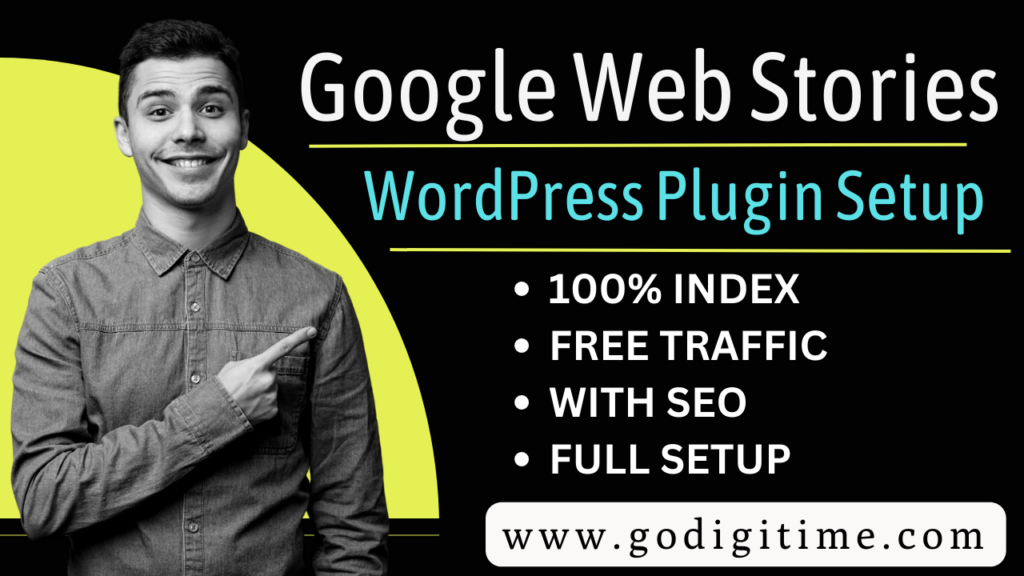
Introduction
One of the latest trends in online content creation is Google Web Stories, which are short, engaging, visual narratives that can be easily consumed on mobile devices. In this article, I will guide you steps to create Google Web Stories on your WordPress site, and explain why are Google Web Stories important for search engine optimization.
What are Google Web Stories?
Google Web Stories are mobile-first, full-screen visual narratives that can include text, images, videos, animations, and other interactive elements. Web Stories is designed to provide an engaging experience for mobile and tablet devices. Google Web Stories can be easily shared on your social media platforms and they can help you attract more traffic to your website users.
Why are they beneficial for your WordPress site?
Google Web Stories can offer several benefits for your WordPress site, including:
- Higher engagement rates: Web Stories are visually appealing and easy to consume, which can lead to higher engagement rates and longer user sessions.
- Enhance SEO Ranking: Google has identified web Stories as an effective way to increase online visibility, and they offer a wide range of tools to optimize your Stories for search engines.
- Diversify Content Offering: Adding Web Stories to your content mix can help you diversify your offering and attract a new audience that is interested in this type of content.
How can setting up and publishing Web Stories improve your SEO ranking?
Google Web Stories can improve your SEO ranking in several ways, including:
- Increasing website traffic: If your Web Stories are compelling and relevant, they can attract more organic traffic to your site.
- Enhancing user engagement: User engagement is one of the key metrics for SEO ranking, and Web Stories can help you increase engagement rates by providing a more dynamic and interactive experience.
- Optimizing for mobile-first indexing: Google highly recommended mobile-friendly and fast-loading websites and Web Stories are the right way to optimize your website for mobile devices.
Getting Started with Google Web Stories
How do you set up a Google Web Stories account?
1’st log in to your WordPress dashboard and go to the Plugin section and install Plugin called Google Web Stories Plugin (Officially Plugin Webstories) Follow all steps shown in our Video.
What are the basic requirements for using Google Web Stories?
To create and publish Web Stories, you need to have access to a WordPress site and Google Web Stories Plugin.
How do you create a new Web Story?
To create a new Google Web Story, log in to your WordPress website Click on Webstories Plugin and select the “Create” option. You can choose any of the templates, layout options, and design elements to create your story.
Customizing your Google Web Stories
How do you customize the appearance of your Web Story?
To customize of your Web Story, you can use a variety of design elements, such as text, animations, and images. You can also choose from templates to save time.
What are the best image and video formats to use for your Web Stories?
Some recommended formats include JPEG, PNG, and MP4.
How do you add text, animations, and buttons to your Web Stories?
To add text overlays, animations, and other effects to your Web Stories, you can use a variety of third-party tools and plugins that are compatible with Google Web Stories. Some popular options include Canva and Adobe Spark, which offer easy-to-use interfaces and customizable design elements.
Publishing your Google Web Stories
How do you publish your Web Stories on your WordPress site?
Publish Google Web stories on your WordPress Site and use the websites plugin available for the WordPress repository. The web stories plugin allows you to upload, customize, and publish your Web Stories directly from your WordPress site dashboard.
What are the best practices for publishing and promoting your Web Stories on social media?
To promote your Web Stories on social media, you should use relevant hashtags, shareable images, and engaging captions that attract and retain your target audience. You can also collaborate with influencers or other partners to amplify your reach and generate more engagement.
How can you track the performance of your Web Stories using Google Analytics?
To track the performance of your Web Stories using Google Analytics, you can use the UTM tracking parameters to monitor clicks, views, and other engagement metrics. You can also use the Web Stories dashboard to analyze your audience demographics, behavior, and traffic sources.
Optimizing your Google Web Stories for SEO
What are the different ways that Google Web Stories can improve your search engine ranking?
Google Web Stories can help you improve your search engine ranking in several ways, including:
- Providing high-quality, engaging content that attracts backlinks and social shares
- Offering a fast and mobile-friendly browsing experience that enhances user engagement and retention
- Optimizing for specific keywords, metadata, and other on-page SEO factors that help search engines understand your content and rank it higher in relevant search results
How do you optimize your Web Stories for keywords, metadata, and other SEO factors?
To optimize your Web Stories for keywords, metadata, and other SEO factors, you can use a variety of tools and techniques, such as:
- Conducting keyword research to identify relevant and high-traffic search terms
- Including keywords in your Web Story content, headlines, and metadata
- Using descriptive tags and alt text for your images, videos, and other media
- Improving your site speed and mobile responsiveness to enhance user experience
How do you create attractive content that will increase traffic to your site?
To create more attractive web Stories that mean attracting more visitors to your website, you can follow these best steps:
- Use a clear and concise narrative structure that is easy to follow and understand
- Incorporate visual and interactive elements that are relevant and engaging
- Use a consistent and recognizable visual style that reflects your brand identity
- Write compelling headlines and descriptions that entice users to click and read more
Conclusion
Google Web Stories offer a unique and compelling way to enhance your online presence and attract more visitors to your WordPress site. By following the steps outlined in this article and Video, you can create and publish Web Stories easily and retain your audience, improve your Google ranking, and drive more traffic to your website.
FAQs
What is the ideal length for a Google Web Story?
Google Web Stories are designed to be short and engaging, typically ranging from 5 to 10 pages or screens. However, the length may vary depending on your content and storytelling style.
Can you use third-party plugins and tools to create and publish Web Stories on your WordPress site?
Yes, many Plugin is available to create web stores in the WordPress dashboard
How often should you create new Web Stories to maintain your online visibility and attract more visitors to your site?
The frequency of Web Story creation may vary depending on your content strategy and goals. Increase your Website traffic to create new Web Stories on a regular basis and maintain your online visibility and attract more traffic to your site.
